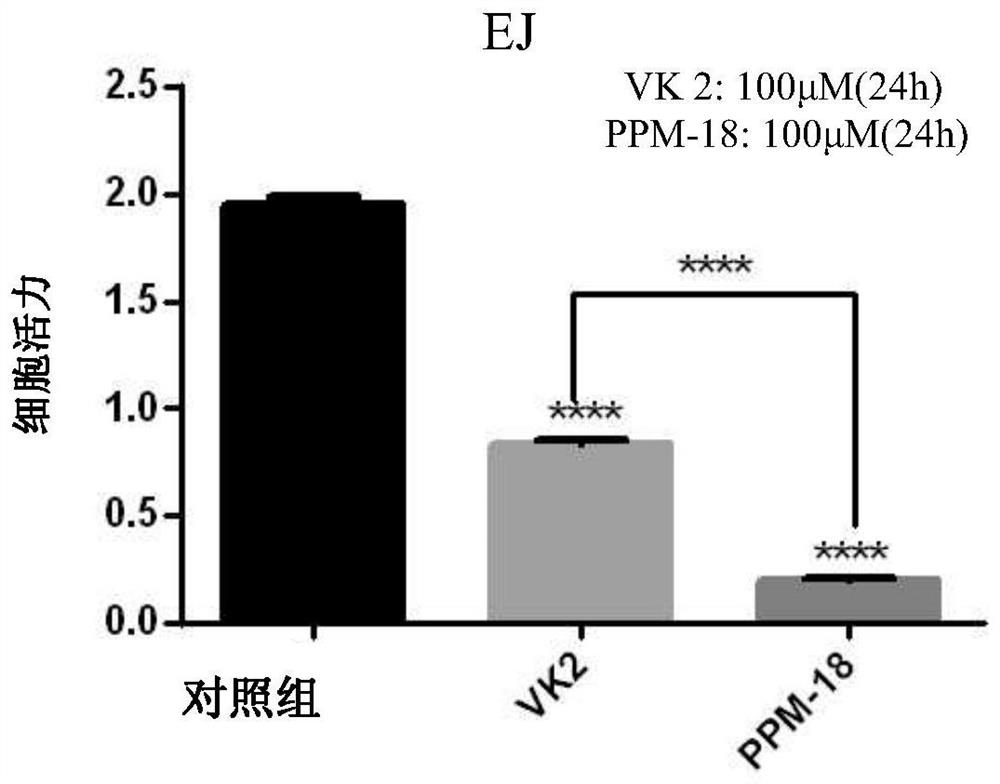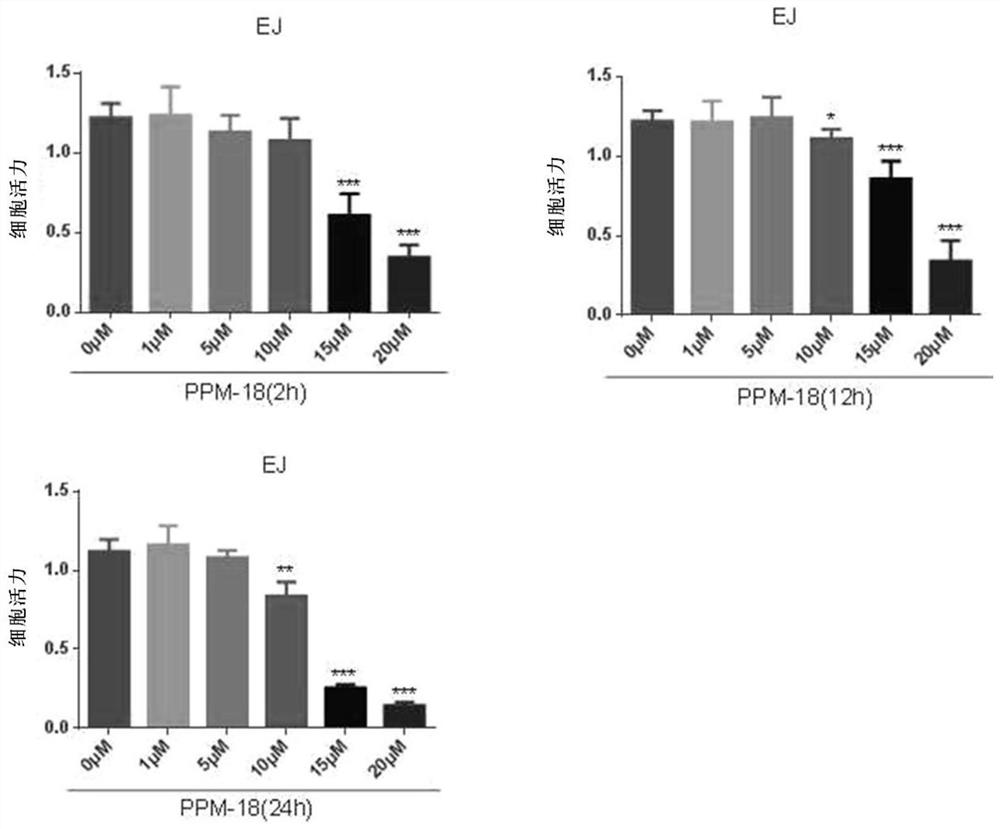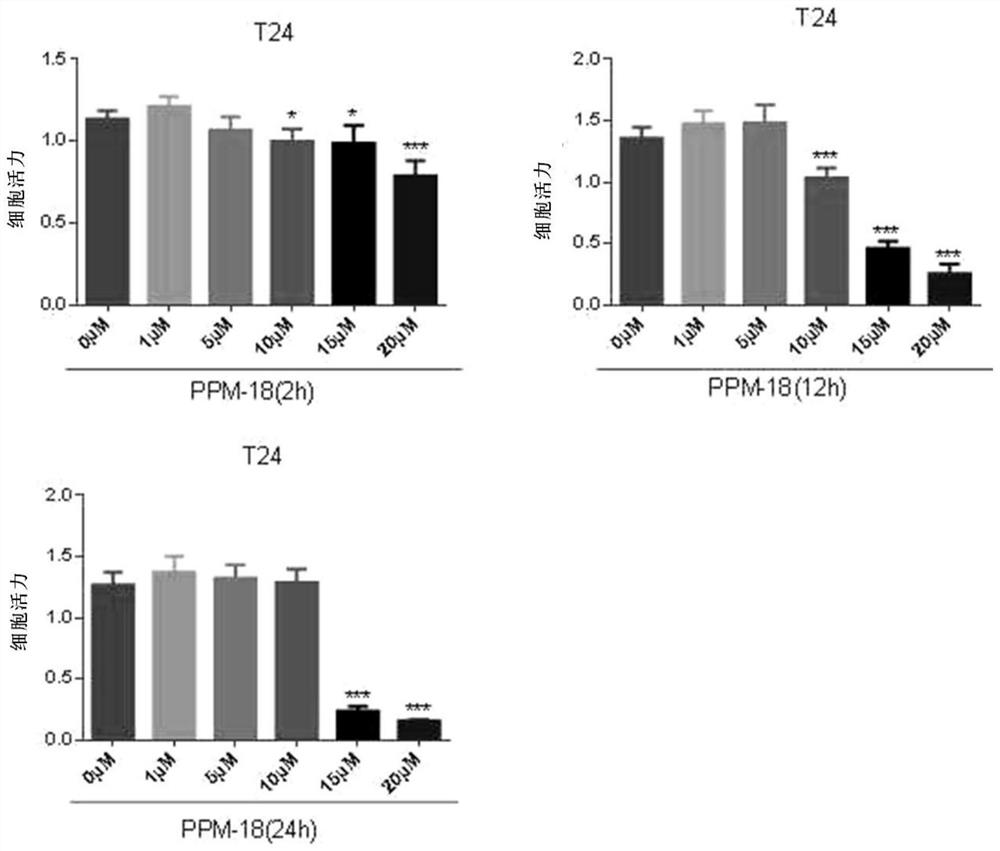Application of ppm-18 inducing apoptosis of bladder cancer cells by activating intracellular reactive oxygen species
A PPM-18, 1. PPM-18 technology, applied in the field of biomedicine, can solve the problems of obvious side effects, recurrence, and low patient tolerance.
- Summary
- Abstract
- Description
- Claims
- Application Information
AI Technical Summary
Problems solved by technology
Method used
Image
Examples
Embodiment 1
[0036] Embodiment 1, PPM-18 anti-bladder cancer activity experiment
[0037] PPM-18 anti-bladder cancer activity experiment mainly includes the following steps:
[0038] (1-1) In vitro culture of bladder cancer cells used in experiments;
[0039] (1-2) using different concentrations of PPM-18 or PPM-18 to treat the cells cultured in step (1-1) for different times;
[0040] (1-3) Counting the detection of bladder cancer cell viability, apoptosis and ROS indicators treated with different concentrations of PPM-18 or PPM-18 for different times;
[0041] (1-4) According to the results of step (1-3), draw a graph of the detection results of the anti-bladder cancer activity of PPM-18.
[0042] The specific operation is as follows:
[0043] (1-1) Bladder cancer cell lines EJ and T24 were made into a single cell suspension with culture medium containing 10% fetal bovine serum, and 10,000 cells per well were seeded into a 96-well plate with a volume of 100 μl per well, and cultured u...
Embodiment 2
[0064] Embodiment 2, PPM-18 cell safety experiment
[0065] The PPM-18 cell safety experiment mainly includes the following steps:
[0066] (2-1) culturing the normal human hepatocytes used in the experiment in vitro;
[0067] (2-2) Treating the cells cultured in step (2-1) with different concentrations of PPM-18;
[0068] (2-3) Statistically detect the viability and apoptosis index of cells treated with different concentrations of PPM-18;
[0069] (2-4) According to the result of step (2-3), draw a graph of the cell safety detection result of PPM-18.
[0070] The specific operation is as follows:
[0071] (2-1) Normal human hepatocytes were prepared into a single cell suspension with culture medium containing 10% fetal bovine serum, seeded into a 96-well plate with 10,000 cells per well, and the volume of each well was 100 μl, and cultured until the cell abundance reached 80 %-90%.
[0072] (2-2) To the cells cultured in step (2-1), add PPM-18 such as 1 μM, 5 μM, 10 μM, ...
Embodiment 3
[0079] Example 3, PPM-18 can inhibit the viability of bladder cancer cells and the formation of clones, but has no obvious inhibitory effect on the viability of normal cells
[0080] In this embodiment, the experiment of PPM-18 inhibiting the viability of bladder cancer cells mainly includes the following steps:
[0081] (3-1) Cell culture: culture bladder cancer cells and normal human liver cells used in experiments in vitro, and digest and subculture the seed plate after the cells grow to the logarithmic growth phase;
[0082] (3-2) 96-well plate: the bladder cancer cell lines EJ and T24 were made into a single cell suspension with 10% fetal calf serum culture medium, and seeded into a 96-well plate with 10,000 cells per well, with a volume of 100 μl per well , cultivated until the cell abundance reaches 80%-90% (generally cultivated for 24 hours);
[0083] (3-3) Dosing treatment: after 24 hours of culture, gently suck out the old culture medium, and treat the cultured cell...
PUM
 Login to View More
Login to View More Abstract
Description
Claims
Application Information
 Login to View More
Login to View More - R&D
- Intellectual Property
- Life Sciences
- Materials
- Tech Scout
- Unparalleled Data Quality
- Higher Quality Content
- 60% Fewer Hallucinations
Browse by: Latest US Patents, China's latest patents, Technical Efficacy Thesaurus, Application Domain, Technology Topic, Popular Technical Reports.
© 2025 PatSnap. All rights reserved.Legal|Privacy policy|Modern Slavery Act Transparency Statement|Sitemap|About US| Contact US: help@patsnap.com



